OFF-TOPIC (64)
By:
October 10, 2024
Off-Topic brings you over-the-transom, on-tangent essays, dialogues and subjective scholarship on an occasional, impulsive basis. For the autumn of our year, an upended trick-or-treat bag of cultural loot from the holiday we can’t wait for…
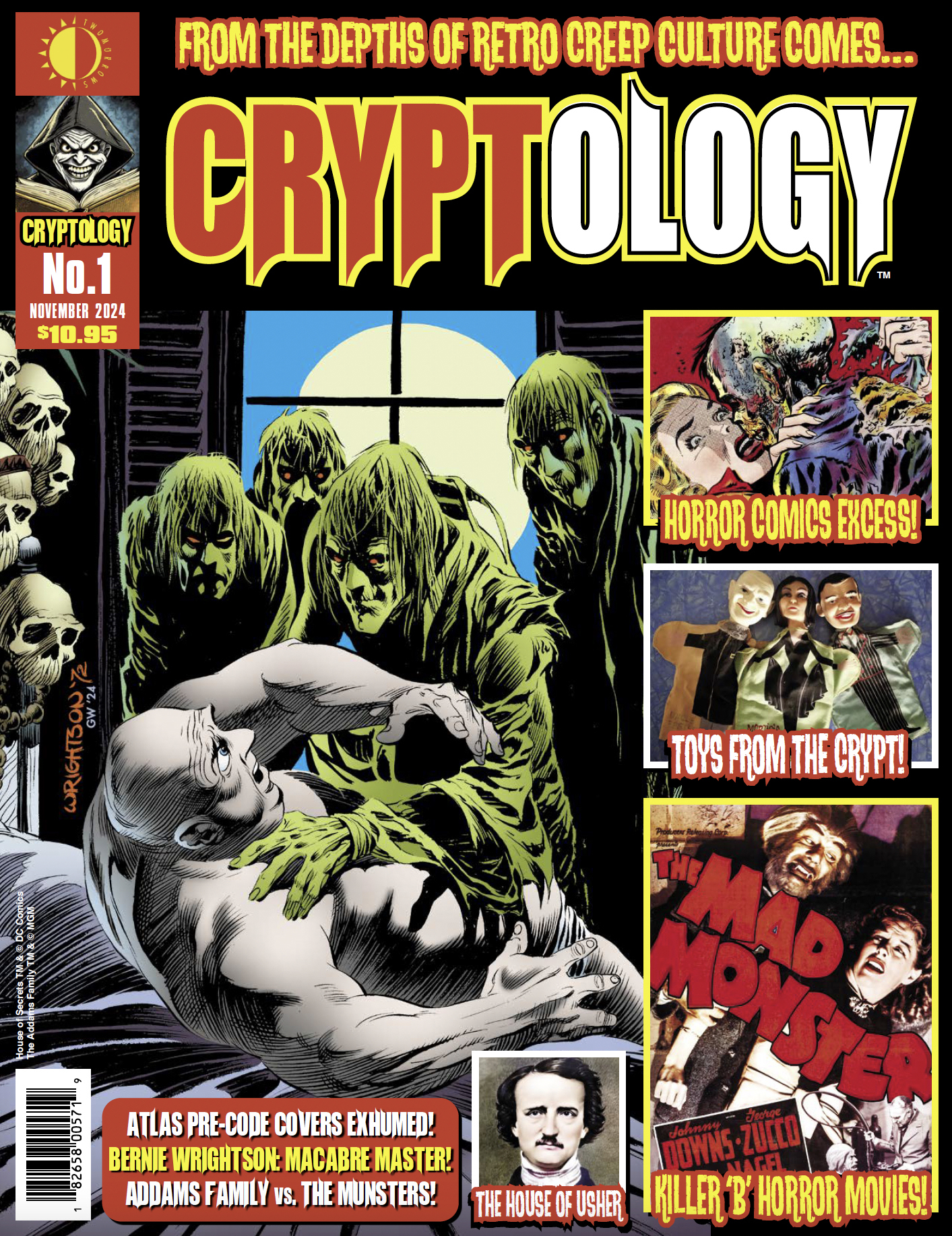
THE VAULT OF FUN
For those of us who grew up looking forward to Halloween more than Christmas or Hanukkah, there was no better way to wait it out than curling up with magazines full of the monster movies that weren’t coming to your town and the horror tchotchkes you could dream of sending away for once you were an adult and had nothing else to spend your money on. The quaint and curious Cryptology from TwoMorrows Publishing (whose Jack Kirby Collector, full disclosure, I’ve long written for) exhumes this experience with vintage movies, comics, toys and TV you might not even have known died the first time. It’s a… coffin-table format of lavish illustration and firsthand connoisseurship.
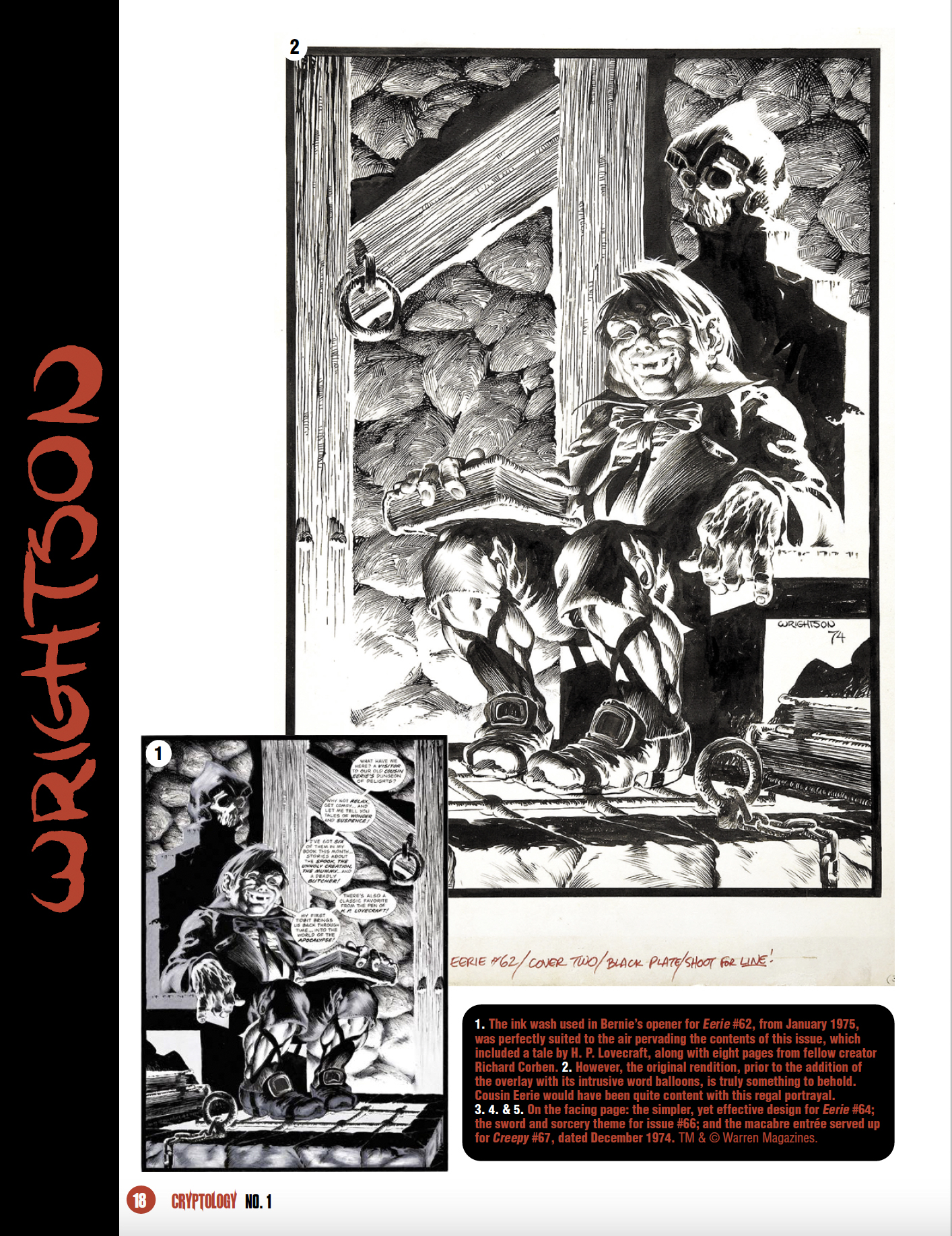
The debut issue, out just in time for Goth X-mas, starts off with a copious catalogue/commentary on the late, revered horror illustrator Bernie Wrightson. Copious while, in a good way, not comprehensive: Wrightson is best known for co-creating Swamp Thing and illustrating a definitive edition of Frankenstein; focusing on the frontispieces and chapter-intro pages from early-1970s DC “mystery” comics and Warren adult-horror mags, now less historically high-profile or pop-culturally revisited, allows Wrightson’s engraved, macabre, yet whimsical style to be appreciated with perhaps the freshest eyes.
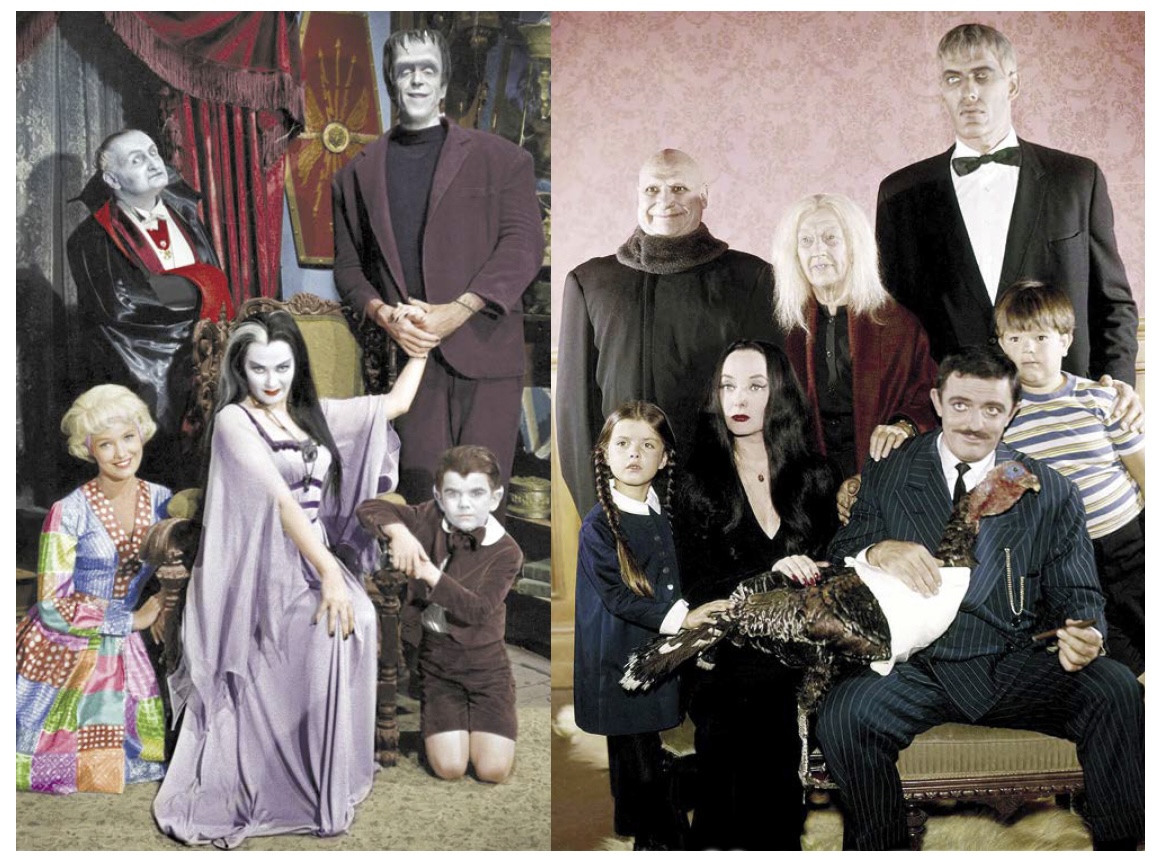
Next we get extensive retrospective coverage of that anomalous moment in mass media when two shows about families of monsters in gothic mansions next-door were on TV at once — The Addams Family and The Munsters, mystically debuting within a week of each other on rival networks in 1964 — in a kind of jocular presentiment of the counterculture that would explode later in the same decade not always in such mutually accepting or unself-serious ways. Well-sourced quotes from many of the principals open a fresh window into how this must have impacted culture at the time. The bizarre, envy-inducing profusion of tie-in merch and comics then cataloged gives eye-opening context for how long our mediated, marketed existence truly stretches back.
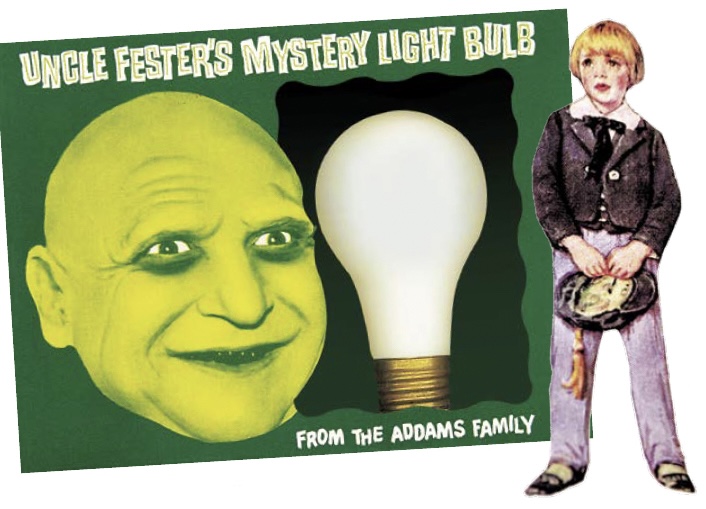
There follow time-displaced reviews of forgotten 1940s grindhouse precursors (the “Killer B’s” section), and less-remembered Hammer Studios opuses (“Hammer Time”). This issue’s “Killer B’s” gives a thoughtful, contextual second look to The Mad Monster, a sci-fi werewolf potboiler I found intriguing not least since it seems to share a plot-point with a pending graphic novel of my own; “Hammer Time” revisits and makes a strong case for The Devil Rides Out, a rare hero role for Christopher Lee where he looks so sexy I at first mistook him for Peter Cushing. Refreshingly for a nostalgia mag, there is also a writeup of Netflix’ recent Fall of the House of Usher adaptation, as well as an apparently exhaustive history of graphic versions of that story. Graveside caricaturist par excellence Pete von Sholly is on-hand as editorial cartoonist and memorably immortalizes editor Peter Normanton as on-page host The Cryptologist.
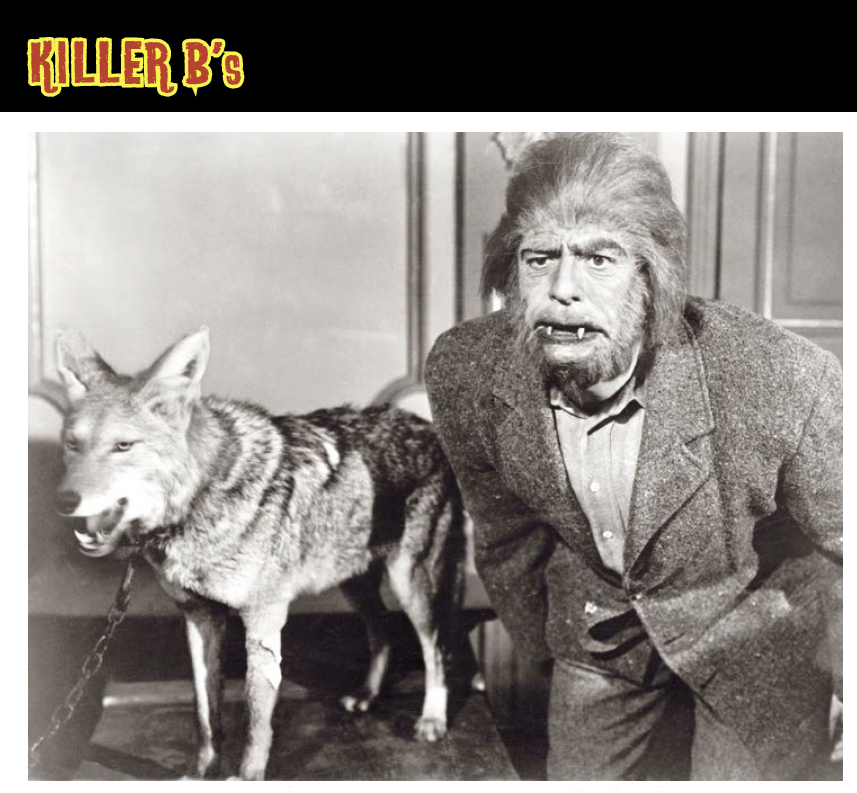
The issue holds a few horrors not intended; Normanton’s allegiance to the purple hyperbole of vintage monster mags can sometimes chill the blood and glaze the eyes, and the icy touch of A.I. seems apparent in an otherwise retro-stylish-enough poster pulled from the web that calls the Netflix series “The Fall of the Usher House.” But I’ll go back down to the dank basement for every issue I can carry, no matter how many in the audience tell me to stay away from that door!
CAPITALISTS VS. DINOSAURS
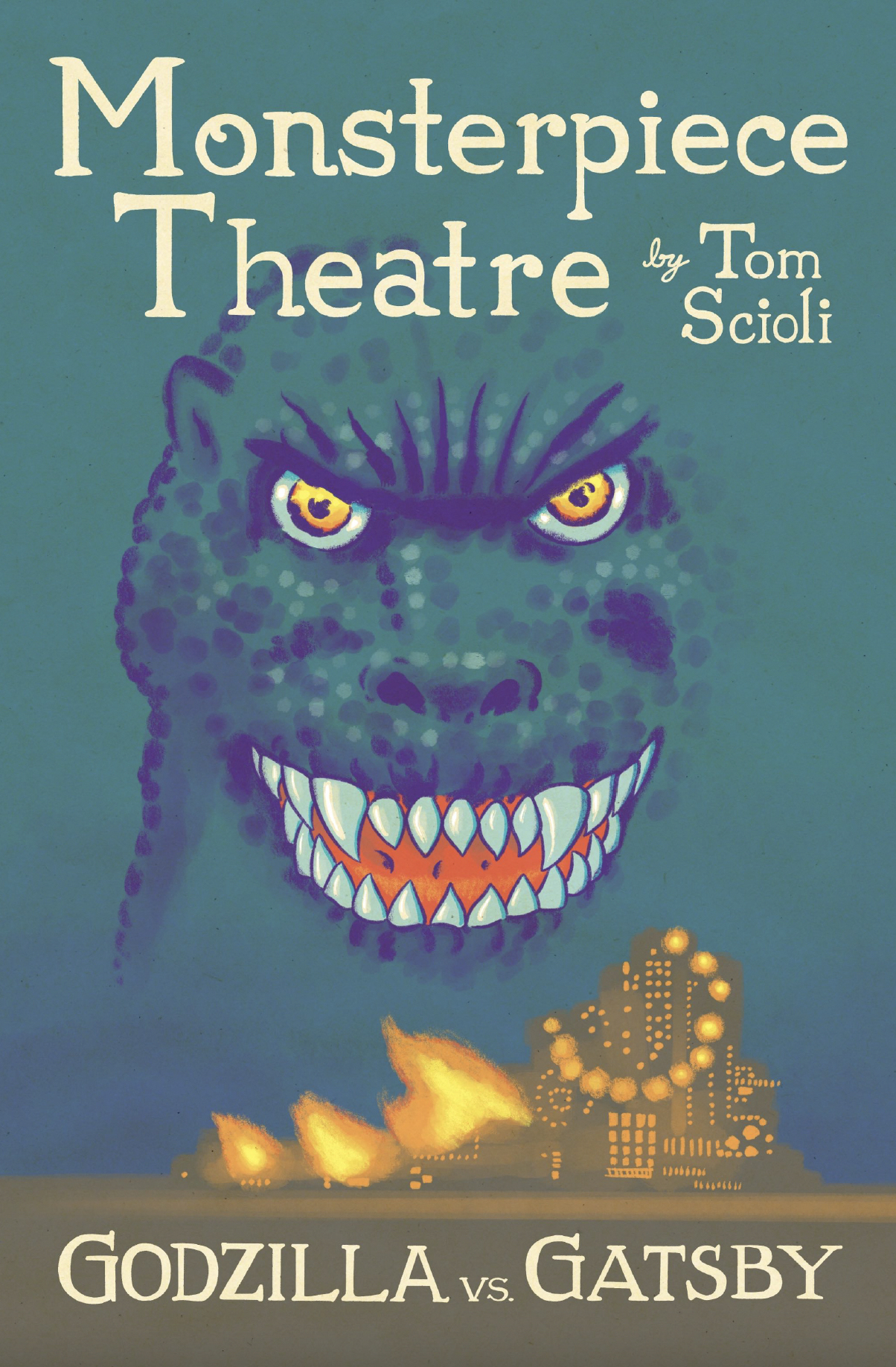
The world may or may not need a Superman, but we’d all be lost without monsters. It’s pointless to be angry at a hurricane, but it would be great if you could hit one, and that’s why we’ve got Godzilla. Him you can strike back at, and while you also can’t blame a hurricane or Godzilla — he was created by humans’ nuclear hubris just like Helene was created by human-made climate change — he presents the image of something you can stop.
No one’s more famous for not accepting outcomes and obsessing on what might have been than Jay Gatsby, the self-fabricated millionaire and unrequitable romantic from the classic novel that bears his name, and when, in pop-auteur Tom Scioli’s new kaiju-sized comic Godzilla’s Monsterpiece Theatre, the tyrannical lizard lays waste to West Egg, Long Island and Gatsby dedicates himself to vengeance, the crusade of a deranged tycoon at a point of possible global destruction makes this book feel right in time for those two eternally entwined events, Halloween and Election Day.
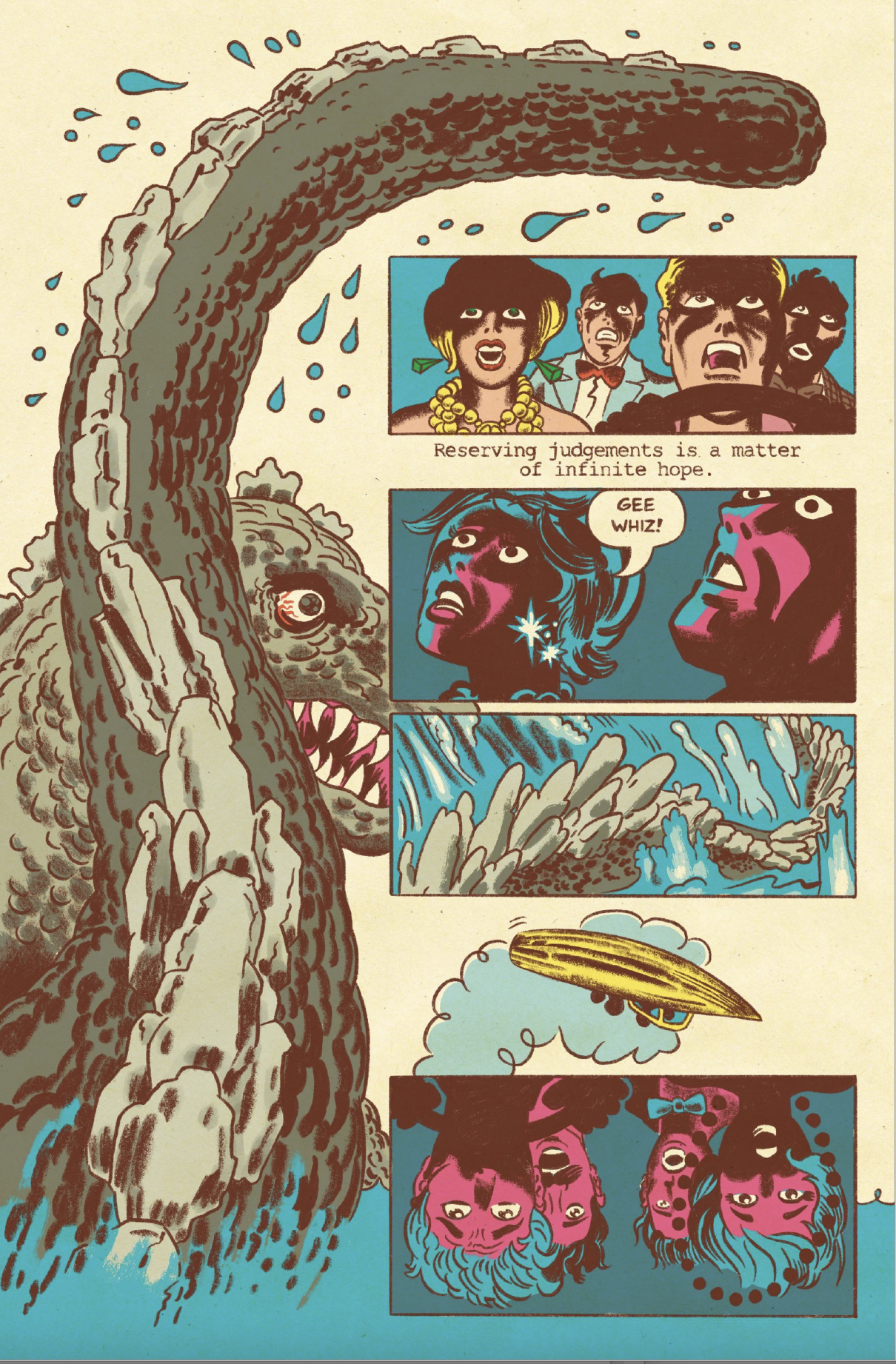
Scioli’s sense of both terrifying panoramic scale and cropped-off, close-focus chaos matches and maybe surpasses the best giant-monster movie technique you’ve ever witnessed in manipulating the awe of full revelation and the even greater menace of what you can’t yet see. His fluency in conveying different locales and moods by shifting stylistic textures to suggest variations in the very fabric of perception (austere ashy sepia for the WWI trenches, deco linework and twinkly light for Gatsby’s soirees, a coloring-book simplicity for the English countryside, and a shadowy charcoal for Dracula’s abbey — yes, Jay is not the only fictional icon joining the fray) surrounds you completely in another pictorial world while whipping you around it. And as epically as a mogul vs. a monster, his love for the material grapples with his laconic wit for a diabolically clever remix of the original novel in a new time-slipped and genre-smashed context. I had to talk to Tom about what sparked his own mad quest and resulted in his new, yes, masterpiece…
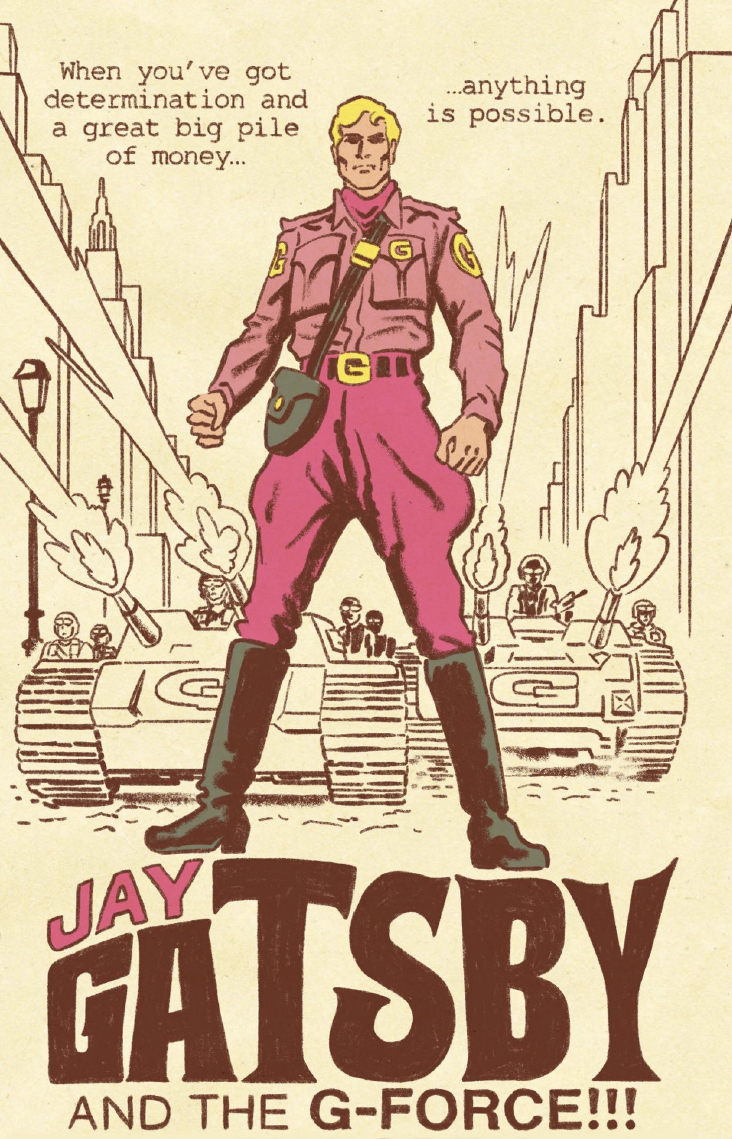
HILOBROW: I could first ask not about the big G but the little G — I count this as at least the fourth Gatsby that’s come out this year, in a comics context. What are your thoughts on why now?
SCIOLI: It’s the ’20s [laughs], and that’s the emblematic novel of the ’20s. And it entered the public domain not too long ago. So I kind of had that sense, making this, that this will be the one that sticks a pin in all the others [laughter].
HILOBROW: It can’t be topped, anyway…
SCIOLI: Yeah, good luck!
HILOBROW: And not just because a century’s time has rolled around, but we might have oligarchs like Gatsby more on our minds again…
SCIOLI: The disparity of wealth seems to be in a similar place. I’m sure that the scale that it’s at is just massive compared to then. Gatsby owned a beach, but now there’s people who own islands, and archipelagos… [laughs]

HILOBROW: I guess the traditional Godzilla setting would be tropical islands getting ravaged, and we would associate that with the downtrodden of the earth, but now they’re the prizes of the wealthy. Interesting to see someone like Gatsby come across a force like Godzilla. I was also impressed by the comprehensiveness of the cameos, even including [WWI flying hero/novelist] Victor Yeates — how intensively did you hit the research to see who would’ve been around concurrently?
SCIOLI: The Yeates thing just came to me, because I had all these biplanes and pilots [attacking Godzilla] and it struck me, Oh, one of those could be Yeates.
HILOBROW: So you’d been familiar with him before?
SCIOLI: Yeah — there’s only so many ace fighter-pilot authors [laughs].
HILOBROW: You touched on public domain a moment ago, but I would think it would be a stretch… between Steamboat Willie and Gatsby I would have bet more on Steamboat Willie as the one with the most re-do’s.
SCIOLI: I wouldn’t touch that, I think everybody’s got institutional memory, or generational trauma, from anyone who crossed Disney’s path! I was thinking what if I just did a straight Gatsby adaptation [after this] — there’s been over a thousand Batman comics, so why can’t there be a thousand Gatsby comics? [laughter]
HILOBROW: I was surprised that [the first issue] was somewhat more Gatsby than Godzilla…
SCIOLI: My initial version, there was barely any [Godzilla] — I sort of saved him for the very end. You just saw his effects. And I was going from the movies. Y’know, you see a washed-up life preserver [where he’s been]. But I decided, people want to see Godzilla. But a little bit goes a long way. The classic horror movies were that way too. As it progresses, the series [will become] more and more Godzilla.
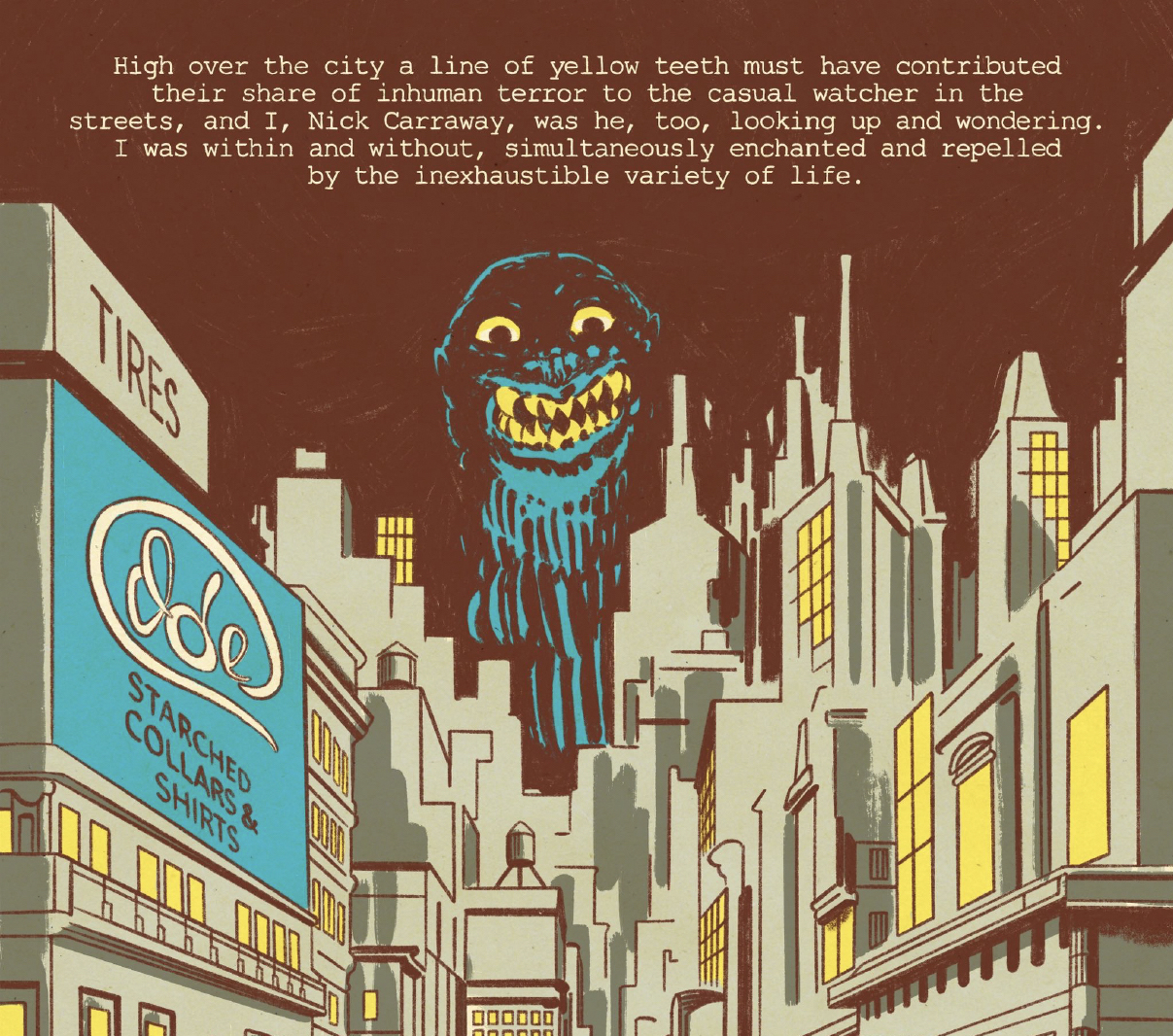
HILOBROW: So as he takes over the narrative more, it’s worth asking, what are the meanings of Godzilla and what attracted you to a project like this — those could be two separate questions I know; what’s awesome about him and what does he signify.
SCIOLI: They really are, because I could tell you what he represents, but so much of what attracted me to him was Godzilla as Godzilla — this really cool, lumpy reptilian with really cool-looking backfins and teeth and eyes that are kind of… muppet eyes — and just the nostalgia of Godzilla, this thing that I’ve been drawn to for as long as I can remember; this elemental pull. Which I guess does relate to what Godzilla means, because there must be some kind of underlying fascination; I’m not the only one that Godzilla has this effect on. I can only think of, y’know, the reptile brain, and the part of all of us that Godzilla speaks to. Godzilla isn’t somebody you can reason with, or talk to… Frankenstein, as much as that sort of nonverbal Frankenstein is burned into our memories, Frankenstein could also be very loquacious, and you’re not gonna find a version of Godzilla that’s like that.
HILOBROW: Regardless of the PBS-like title of this book! There is a whole tradition now of reclaimed classic characters, League of Extraordinary Gentleman-type things…
SCIOLI: We almost forget that in the wake of League of Extraordinary Gentleman there was a tidal wave of, y’know, comics with Teddy Roosevelt, Tesla, in like, superteams, following that mold. It is its own subgenre.
HILOBROW: What do you see as your book’s place in relation to that?
SCIOLI: I don’t have the same values or goals or aims as that tradition, it’s like a cousin to some of those things, but to me it comes straight out of early Marvel… which I guess, Alan Moore, that was his way of making an X-Men or Avengers, but have it have a little more gravity to it. I think he even said as much, that to differentiate it from every other new superhero team he was gonna come up with a new [one] that was gonna seem like the first superhero team. And when you read it, there’s straight analogs to the Avengers; Jekyll & Hyde are more Hulk & Bruce Banner. In a small way Godzilla vs. Gatsby is paying tribute to Alan Moore and Kevin O’Neill’s League of Extraordinary Gentleman — it feels like a recent comic, but it’s actually I think 25 years ago. The stuff that they were paying tribute to, the ’60s Marvel stuff was at that point 25, maybe 30 years old, so, I’ll happily wear that.
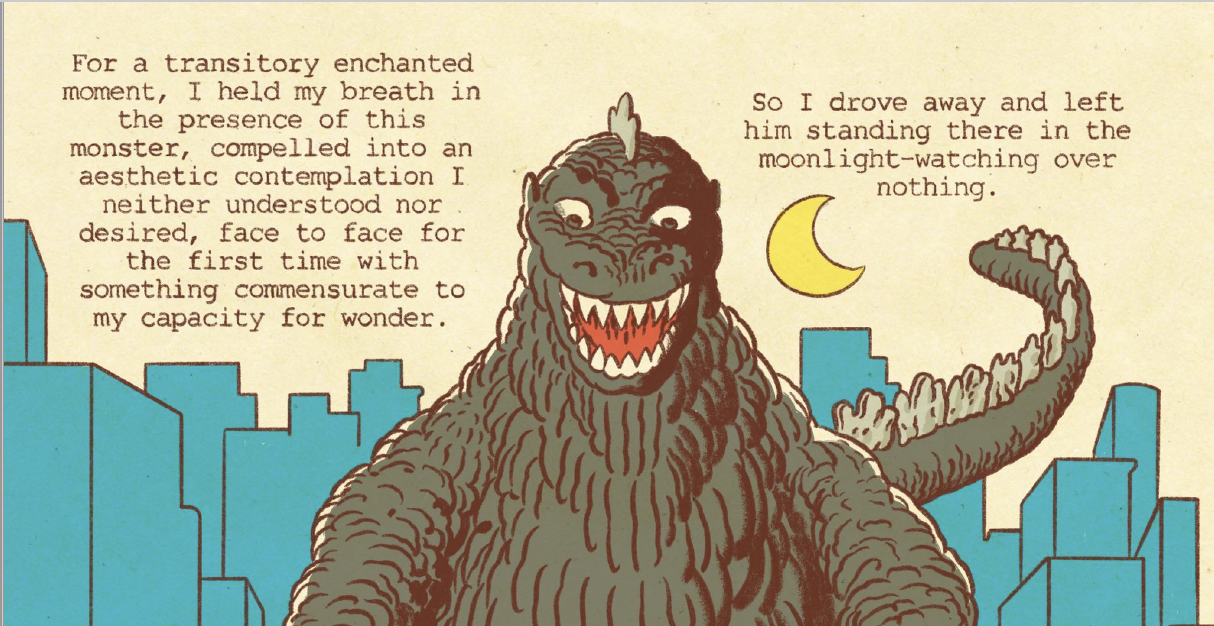
[The rest of our conversation on Tom’s outsize ambitions and sense of history is coming soon!]
WE’LL CALL YOU (FROM INSIDE THE HOUSE)
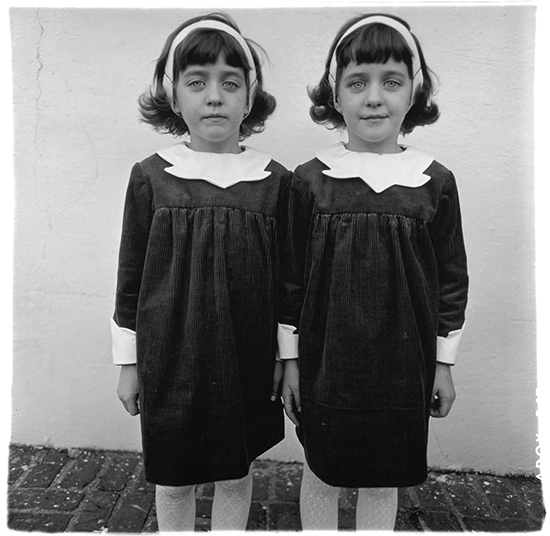
For all its quaint context and septuagenarian actors, Only Murders in the Building was one of the first manifestations of a truly modern, post-Covid culture: A hymn to interiors, the cozy warrens and secret passageways of the fictional Arconia apartment complex being an artistic ecosystem of our now-more-than-ever private lives. The compartmented repositories of personality, the unity in segmentation that we all got artificial windows into via the new commons of Zoom, were the usual setting of this series that, as per its title, sticks to the full life-cycle played out indoors.
It may be no coincidence that the show has taken a deep dive over the proverbial shark with the season where its protagonists venture away from the cocoon of the Arconia and the maze of New York City itself by traveling to Hollywood to take meetings for a movie about their podcast; it’s possible that moving the storyline out into the light may kill it like a vampire.
Centered this time around the murder of Charles’ former stunt-double Sazz, who may or may not have been mistakenly killed in his place, much is made of doppelgangers and mirror images (stand-ins like Sazz, the actors hired to play the three protagonists, the twins who are directing the Only Murders movie) — so much is made of it that by Episode 5, when at least two sets of the characters are ordered to take positions for a photo-shoot in front of an array of mutually-reflecting dressing-room-style mirrors, I expected a cutaway to Rocky Horror’s Criminologist to explain it to me with a pointer.
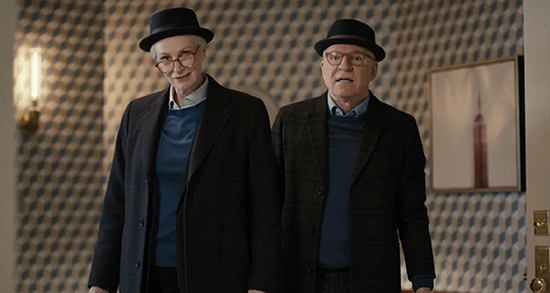
Function follows form, as with Episode 4 the show feels suddenly taken over by nefarious hacks posing as the usual creative team; up to then (even when set in Hollywood) the story had been showing a new depth, stretching credibly into light tragedy as Charles reflects on his loss and converses with Sazz’s hallucinated ghost, and the characters face real confrontations with how others see them as the movie’s writers and actors shadow them to get some aspects ridiculously wrong and others uncomfortably right.
Then there’s a sudden lurch into sub-sitcom broadness, as the Hollywood characters (by now temporary residents at the Arconia) get escalatingly cartoonish, the jokes and situations schoolyard-ishly farcical, and Paul Rudd shows back up as his previously murdered character’s stuntman, a vaudevillian Irish stereotype more than a century past its welcome (and somehow with a Marvel star right there the producers miss out on making any lampoons of “the multiverse”). Flooding a zone until now occupied by the genuinely skilled and funny character actors who make up the new supporting cast of the Westies (endearing weirdos inhabiting the Arconia’s cut-off west tower), it’s as if the series has vacated the sophisticated satires and slice-of-life pages of its clear model The New Yorker magazine and taken up residence in the Charles Addams or Roz Chast cartoons.
Except that Addams’ and Chast’s work has a true affection for the eccentric, while this seems just casual and cruel caricature. Worst of all are “the Brothers sisters,” the directors of the movie. I can’t shake the feeling that these characters are an inexplicable, transphobic swipe at the Wachowskis — odd, communicating in their own unfathomable language, with a gender-ambiguous surname (which rattles the older protagonists from the start), and in one case revealed to have unnatural strength (“like a man,” right?). This is your grandfather’s humor, and for the first time the show feels old-fashioned.
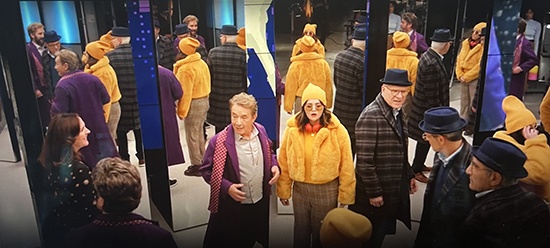
A couple months ago I saw a play in the theatre space at a brutalist block of waterfront NYC artist-housing (so far from the intricate elegance of the Arconia), where the outlier-loving photographer Diane Arbus lived and committed suicide, and is said to haunt the complex. If the stories were true, I’m sure she’d possess an uptown train to the Only Murders set and put a bloodcurdling, vengeful stop to this shite. But Happy Halloween anyway.
[More horrified fascination all autumn at HiLobrow: SCREAM Your Enthusiasm with 25 of film’s most frightened fans, posting now!]
MORE POSTS by ADAM McGOVERN: OFF-TOPIC (2019–2024 monthly) | textshow (2018 quarterly) | PANEL ZERO (comics-related Q&As, 2018 monthly) | THIS: (2016–2017 weekly) | PEOPLE YOU MEET IN HELL, a 5-part series about characters in McGovern’s and Paolo Leandri’s comic Nightworld | Two IDORU JONES comics by McGovern and Paolo Leandri | BOWIEOLOGY: Celebrating 50 years of Bowie | ODD ABSURDUM: How Felix invented the 21st century self | KOJAK YOUR ENTHUSIASM: FAWLTY TOWERS | KICK YOUR ENTHUSIASM: JACKIE McGEE | NERD YOUR ENTHUSIASM: JOAN SEMMEL | SWERVE YOUR ENTHUSIASM: INTRO and THE LEON SUITES | FIVE-O YOUR ENTHUSIASM: JULIA | FERB YOUR ENTHUSIASM: KIMBA THE WHITE LION | CARBONA YOUR ENTHUSIASM: WASHINGTON BULLETS | KLAATU YOU: SILENT RUNNING | CONVOY YOUR ENTHUSIASM: QUINTET | TUBE YOUR ENTHUSIASM: HIGHWAY PATROL | #SQUADGOALS: KAMANDI’S FAMILY | QUIRK YOUR ENTHUSIASM: LUCKY NUMBER | CROM YOUR ENTHUSIASM: JIREL OF JOIRY | KERN YOUR ENTHUSIASM: Data 70 | HERC YOUR ENTHUSIASM: “Freedom” | KIRK YOUR ENTHUSIASM: Captain Camelot | KIRB YOUR ENTHUSIASM: Full Fathom Five | A 5-part series on Jack Kirby’s Fourth World mythos | Reviews of Annie Nocenti’s comics Katana, Catwoman, Klarion, and Green Arrow | The curated series FANCHILD | To see all of Adam’s posts, including HiLo Hero items on Lilli Carré, Judy Garland, Wally Wood, and others: CLICK HERE
